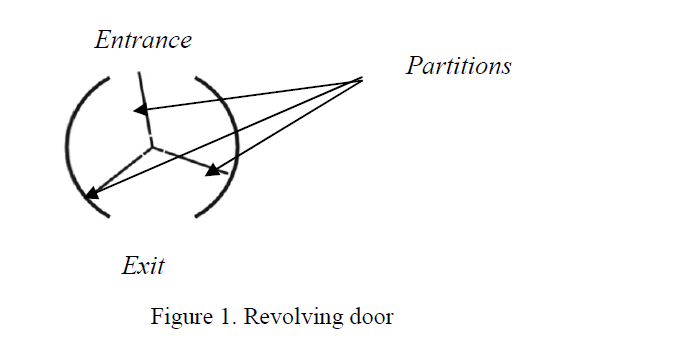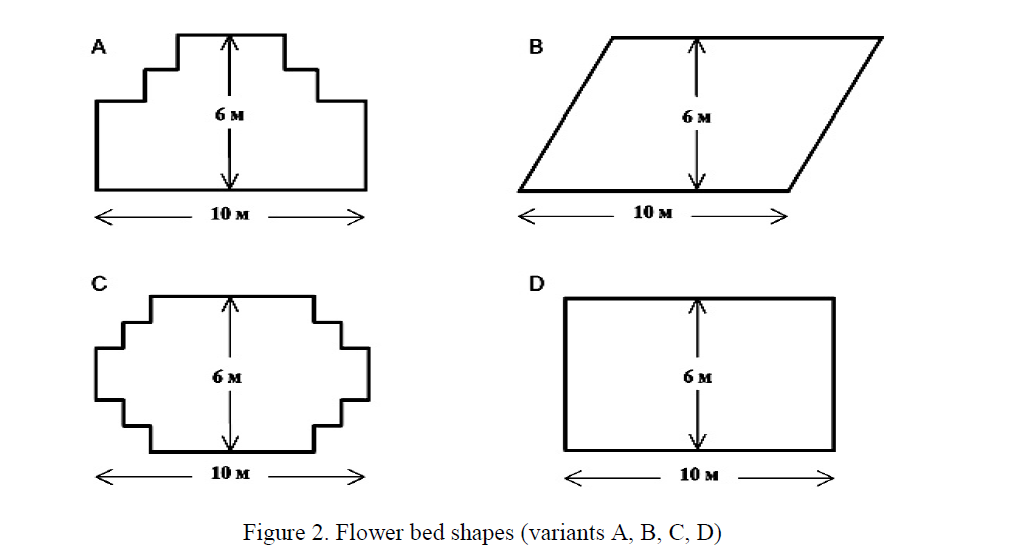The article shows the relevance of mathematical literacy assessment essential for testing school graduates’ competence in the field of mathematics (geometry). The authors analyzed the participation of secondary schools in the external evaluation of educational achievements such as: Unified National Testing (UNT), External Evaluation of Educational Achievements (EEEA), PISA (Program for International Student Assessment) and TIMSS (Trends in Mathematics and Science Study). The analysis showed that international evaluation systems tend to test students' competence using practice-oriented or contextual tasks. The authors included several contextual geometry tasks that were used to assess mathematical literacy in the aforementioned testing systems (UNT, EEEA, PISA, TIMSS). Basing on the results of the analysis, the authors conclude that in actual practice teaching mathematics in senior forms is oriented at forming the ability to solve only educational geometric tasks of various degrees of complexity.
Modernization of Kazakhstani educational system of today is based, in response to the world trends, on the solution of several important tasks. One of the major tasks is focusing on the development of an individual possessing all the competencies essential to apply the acquired knowledge in professional activity in accordance with the needs of the labor market. Another important task is to encourage students’ creative activity and develop the ability to feel confident in unusual life situations.
Starting from 2015 there have been made some amendments and additions to the RK Law on Education. The amended law brings about a phased transition to the updated content of school education [1].
One of the priority goals of education is the development of functional literacy of students [2].
According to A.A. Leontyev, functional literacy is the ability of a person to use knowledge acquired in the course of lifetime to solve a wide range of life problems in various spheres of human activity, communication and social relations [3].
One of the types of functional literacy that is assessed in the context of the external evaluation of students’ academic achievements is mathematical literacy. Mathematical literacy is the basis of a high level of mathematical education at different levels of education.
In Kazakhstan we have two rapidly developing systems of external evaluation of students’ educational achievements: the Unified National Testing (UNT) and the External Evaluation of Educational Achievement (EEEA). The results of UNT and EEEA are used to assess the quality of education. But the results of these assessments do not give us an opportunity to compare the quality of education in our secondary schools with the level of education in other countries. Kazakhstan should participate in international comparative studies in the field of education, such as TIMSS, PISA, PIRLS, etc., to assess the competence of students, namely in mathematics [1].
In the RK State Program of Development of Education and Science (SPDES RK) for 2016–2019 it is said that Kazakhstani secondary schools must improve their results obtained in the course of international comparative assessments carried out in the contexts of TIMSS and PISA: TIMSS (Trends in Mathematics and Science Study) is the international monitoring study of the quality of mathematical literacy of 4th and 8th graders; PISA (International Student Assessment Program) is an international system of assessing the level of mathematical literacy of 15 year old students [1].
According to the rating «Discrepancies in skills in the 21st century» carried out by the World Economic Forum (WEF), Kazakhstan is among those countries that have a low level of cognitive intelligence of students. According to the WEF rating one of basic skills essential for a successful person of the 21st century is mathematical literacy.
By mathematical literacy we understand students’ abilities to recognize problems that arise in the surrounding reality and can be solved by means of mathematics; to formulate these problems in the language of mathematics; to solve these problems using mathematical apparatus; to analyze the employed methods of solution; to formulate and record the results of the solution.
Key instruments of developing and modeling students’ mathematical literacy are contextual (practiceoriented), creative, recreational and research tasks.
Contextual mathematical tasks are tasks whose aim is to solve a standard or non-standard situation by finding an appropriate method of solution with the obligatory application of mathematical knowledge. The main peculiarity of such tasks is the development of cognitive intelligence [4].
In the modern world to possess encyclopedic literacy is no longer enough. It is extremely important to be able to apply generalized knowledge and skills in solving specific situations and problems.
Let us analyze the examples of contextual tasks solution. These tasks were included in such tests assessing mathematical literacy as PISA-2012 and TIMSS-2015, or were included in «mathematical literacy», a required subject in the context of UNT-2017.
Task 1. In a pizza restaurant they have two kinds of round pizza, having the same thickness but different sizes. The diameter of the smaller pizza is 30 cm, and it costs 1100 tenge. The diameter of the larger pizza is 40 cm, and it costs 1500 tenge. Which pizza is more profitable to sell for the owner of the pizza restaurant? Give your reasons.
You should start your reasoning with dwelling on the fact that, though the pizzas have the same thickness and different sizes, the difference in their prices depends only on the surface area of the pizza. There are two possible assumptions in determining pizza seller’s benefits: the first assumption is based on the difference in the cost of the same unit of area of the larger and smaller pizzas, the second on the difference between the areas of the larger and smaller pizzas that can be bought for the same money.

The key point in solving the problem consists in establishing functional connection between the size of the pizza and its price, so the assignment can be referred to the «changes and connections» section. The context itself seems to be of a personalized character. By the nature of the prevailing cognitive activity the task belongs to the cognitive domain «formulate» because it requires creating a model for solving the task.
Task 2. A revolving door has three glass partitions, which, together with this door, revolve inside the circular space. Three door partitions divide this space into three equal sectors. Figure 1 below depicts these door partitions in such a manner as if you look at them from above. How many degrees is the angle between two door partitions?

Figure 1. Revolving door
To solve this task a student must know the design of a revolving door with glass partitions and, if it is possible, he/she must apply their knowledge to project a geometric figure. In fact it is a cylinder, but, if we look at its design from above, it is a circumference with three radii. The partitions form three equal central angles, i.e. three equal parts of the circumference. As we know from the school course of geometry, circumference angular sum is 360 °. This means that the angle between two door partitions is 120 °, because 360˚: 3 = 120˚.
However, many students were unable to answer this question. The point is that in the course of studying mathematics secondary school students’ attention is not drawn to the fact that the central corner of the circumference consists of two supplementary angles and equals to 360º. A teacher can mention this fact when it is necessary to solve corresponding tasks, for example, for constructing circular diagrams when the circle must be divided into sectors in accordance with the ratio of the quantities that need to be shown in the diagram. The task is related to the «space and form» field, «scientific» context, cognitive activity dealing with "application".
Task 3. The gardener has 32 m of wire which he wants to use as a border for his flower bed. The shape of the flower bed should be selected from the following options (Fig.2).

Figure 2. Flower bed shapes (variants A, B, C, D)
If you straighten out the sides of the polygons (shapes A and C), you get rectangles with the sides of 10 m and 6 m. Then the perimeters of the flowerbed on the schemes A, C, D equal to exactly 32 m.
To determine the length of the lateral side of the parallelogram (shape B), this reasoning is possible: figure 2 shows clearly that the (sloping) sides of the parallelogram (shape B) are longer than its 6 m height. It means that the perimeter of the flower bed B is more than 32 m.
The task was rather difficult for most of students. The key to solve this task is the reliance on spatial imagination when converting shapes A and C into rectangles as well as resorting to the knowledge of parallelogram properties and the concept of polygon perimeter. The assignment is related to the «space and form» field. The context itself is of the professional character. By the nature of prevailing cognitive activity the task is referred to the cognitive domain «apply».
The results of the international assessment of «mathematical literacy» show that students cannot cope with geometry tasks that check their mathematical competence essential to facilitate students' readiness for everyday life in the modern society. At the same time, in contrast to everyday life in its narrow sense, the practical (professional) activity of people in various fields (mathematics, medicine, economics, technology, etc.) involves mastering more complex mathematical methods (methods of geometry and others) which are studied in the senior forms. Successful solution of contextual problems in geometry can be secured only when the educational process is oriented toward solving similar problems in the school course of geometry. The analysis of geometry textbooks shows that the applied component in them is represented quite poorly.
References
- Hosudarstvennaia prohramma razvitiia obrazovaniia i nauki Respubliki Kazakhstan na 2016–2019 hody [The State Program of Development of Education and Science of the Republic of Kazakhstan for 2016–2019]. Astana. (2016). zan.kz Retrieved from http://adilet.zan.kz/eng/docs/U1600000205 [in Russian].
- Ob osobennostiakh orhanizatsii obrazovatelnoho protsessa v obshcheobrazovatelnykh shkolakh Respubliki Kazakhstan v 2016–2017 uchebnom hodu: Instruktivno metodicheskoe pismo [Peculiarities of organizing educational process in secondary schools of the Republic of Kazakhstan in 2016-2017: Instructive and methodological review]. (2016). Astana: Natsionalnaia akademiia obrazovaniia imeni I.Altynsarina [in Russian].
- Leontyev, A. (Eds.). (2003). Obrazovatelnaia sistema «Shkola 2100». Pedahohika zdravoho smysla [Educational system «School 2100». Pedagogy of common sense]. Moscow: Balass [in Russian].
- Lebedeva, E. (2004). Kompetentnostnyi podkhod v obrazovanii [Competence approach in educatio]. Shkolnye tekhnologii –School technology, 5, 3–12 [in Russian].